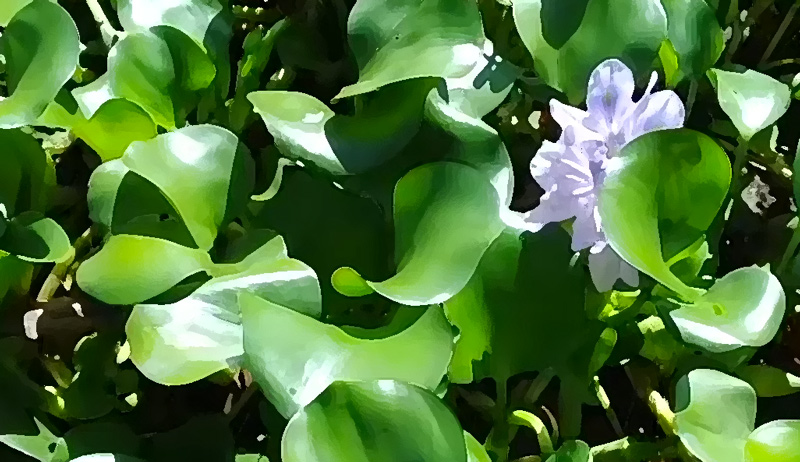Water hyacinth makes good compost, good fertilizer and a good compost pile activator when added as a “green” layer.
Unfortunately, governments are usually less than open to alternative uses for unwanted species.
As C.J. Rogers commented on my recent video:
“Many years ago, my then-fiance and myself were volunteering for one of her company’s public service days. This occasion was a water-lettuce (an invasive FLA scourge very similar to water hyacinth) cleanup on the Wekiva River. The volunteers (mostly pasty faced office drones) paddled around in canoes, hauling tons of the floating lettuce aboard, then depositing on the beach. I wanted to bring a pick-up truck bed full home for my compost, but was informed by the official-looking, bossy lady with the clipboard that would not be permitted. OK, I just rolled my eyes and carried on with the clean-up. When I later inquired what they do with the dump truck load of lettuce we harvested, I was informed that it goes to the landfill. When I tried to engage the bossy lady about the possibilities of turning this invasive crap into gold through composting, instead of filling up the landfill, she quickly made sure everyone within earshot knew that she was infinitely more knowledgeable than this dumb hick. To my assertion regarding the tremendous amount of stored nitrogen and organic material, she assured me the plant (along with water hyacinth) had been studied and tested and there was no useful nutrients whatsoever to be had, and that it was useless in compost or as livestock feed. When I wanted to keep a cup full of the small crawfish and shrimp (the roots dangling from the floating mass are full of them) for bait that evening, same bossy lady informed me those were protected species and I was not to keep any. I think that was about the point I’d had enough of this know-it-all Yankee transplant bureaucrat, said screw it, and went and drank a beer or 7.”
Typical bureaucrat. Reminds me of some teachers I’ve known as well. Low IQ, inflated sense of their own importance.
While I don’t recommend introducing water hyacinth to new waters, it is a very useful species when contained. In ponds, it’s excellent as a renewable source of compost.
You can see more on how I use water hyacinth and other species in my film Compost Everything: The Movie.


4 comments
this is good, am a kenyan and am willing to change this invasive water hyacinth to something of more use, i need cooperates and people willing to work with me in this.
regards,
ounda khadiri
All you need is to get some and make compost or throw it around your fruit trees. No need for any other help. Just do it.
When using water hyacinth as fertilizer, does the hyacinth genes blend themselves into/attach to the gene structure of the plants benefiting from the water hyacinth?
John Baekr
No, I don’t think so. That would be highly unlikely.
Comments are closed.